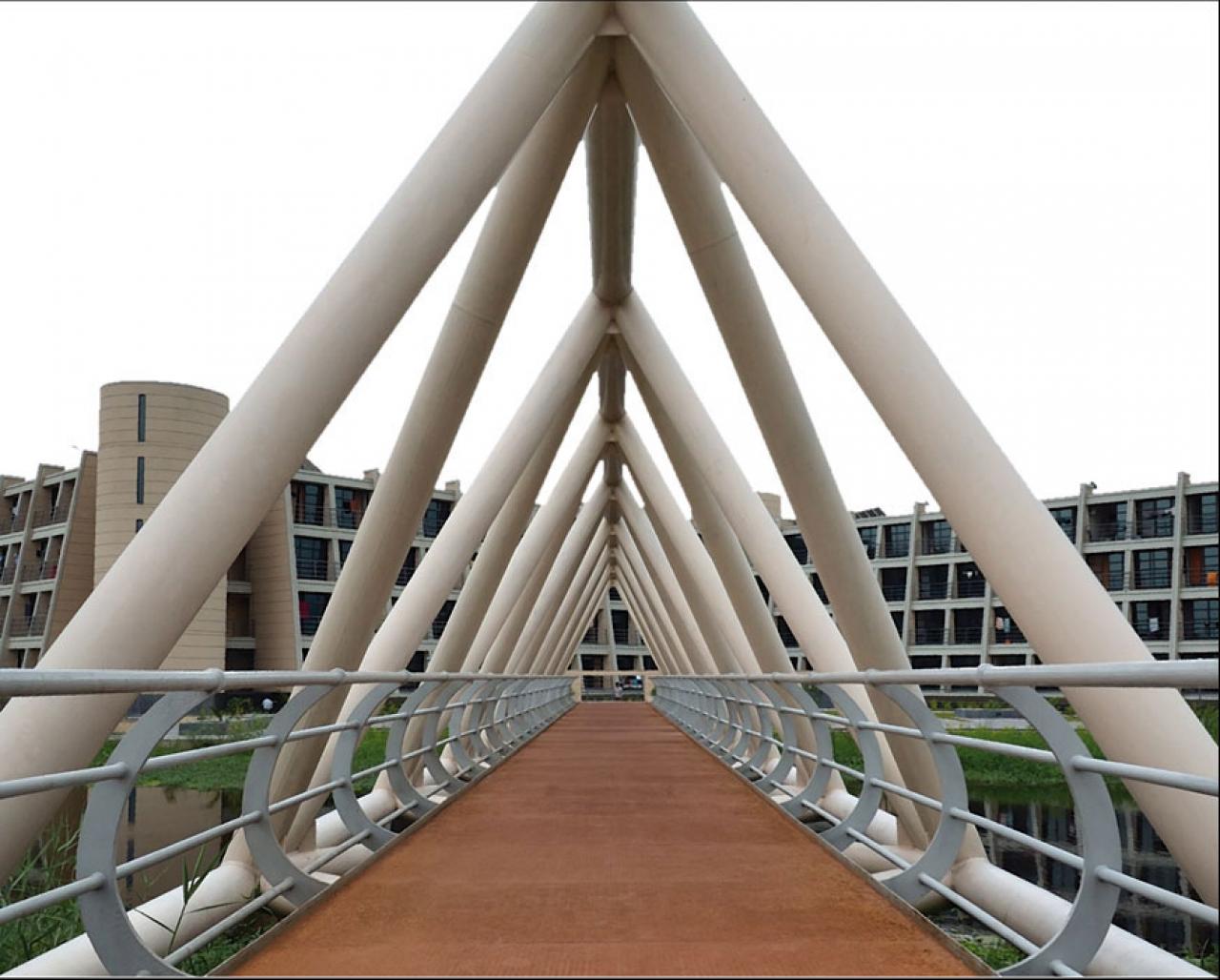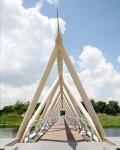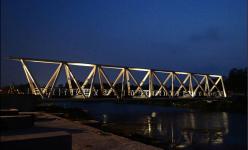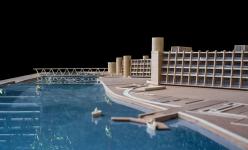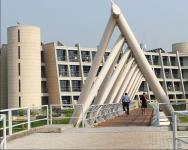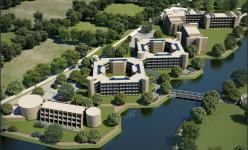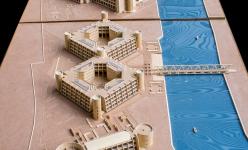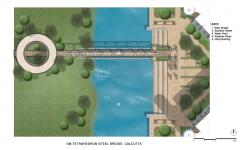Kolkata is a city of bridges, small and large, due to its location on the banks of the Hooghly River, and due to its high water table. Over centuries generations have created land by dredging up soil and creating islands of habitable land from it. Simultaneously they made salubrious ponds of still water, all at one time. The urban landscape of the City of Joy is knitted together with a web of islands and tanks and every conceivable type of causeway and bridge. These range from small bamboo crossings in the villages, to the grand Hooghly Bridge of 1943, which is the icon of the metropolis! More recently the large tensile bridge, the Vidyasagar Setu, joining Kolkata to Howrah has amazed both citizen and visitor alike.
In the same spirit of need and aesthetics, the management of the Indian Institute of Management, Calcutta (IIM,C) instructed its campus architect, Christopher Benninger, to create a water crossing between its residential campus to the east and its academic campus to the west. Indeed, these campuses are but islands of in-filled earth!
Benninger employed the empirical technique of his gurus at the Massachusetts Institute of Technology, called “intuitive reasoning.” This method calls upon the designer to imagine the forces at play in a problem, and to marry them to alternative logical solutions, which in turn can be evaluated against aesthetic appearance, cost and structural efficiency. The given problem was to span between two simply supported points, forty-three meters apart. The muddy pond bed obviated the use of a central pylon support, and ease of construction begged for a structure that could be fabricated on one side, and then “pulled across” the water to the other side. This meant that the structure would be tested in its erection and not in its stable fixed position, once complete! Like the large spanning bridges over the Hooghly, the IIM,C bridge would have to be something of a technological feat on a small scale. Benninger explored beam and truss bridge typologies and concluded to elaborate on the use of triangles in trusses. However, he despaired at the two-dimensional employment of triangles in all of the bridges he had seen, and evolved triangles into a three-dimensional, interlocking tetrahedrons concept, much like the Chinese reed pipes one puts fingers into, and then pulls, finding oneself caught in the strength of the triangular web. So he invented a system of interconnected tetrahedrons along a line! He eventually called this unique structure “The Tetrahedron” and set about its analysis through three dimensional software studies in his Pune studios at India House.
As the concept developed he brought on board his engineering design partner, Bal Kulkarni, who applied STAD software to simulate the stresses within the bridge’s framework. The structure was studied in terms of where the maximum compression, and bending moments, and shear forces at the joints and along the struts would occur. To resist these forces appropriate sizes and gauges of pipes were selected to make up the spokes of the tetrahedron. Where pipes were not long enough, stints were used to connect two pipes creating longer members. Next the methods of joining were analyzed and it was decided to use simple welds. The weld lengths were decided based on the connecting strength required. At critical joints in the tetrahedrons, triangular webs were placed for stiffening. The result is a number of geometries within one another, at one level being composed of three parallel and horizontal pipes, forming in section a triangle, with two pipes below a carriageway hung between them for pedestrian movement. The users walk under the third pipe above their heads, and amongst the diagonal pipes forming the tetrahedrons. Thus, the users “experience” the bridge!
This structure was then empirically tested by the through a vetting process by Professor Debashish Datta, of the Institute for Steel Development and Growth in Kolkata.
Thus, “The Tetrahedron” is a laboratory created and tested, empirical invention, unique in the world, as a one of a kind solution. It is left to other engineers and inventors to evolve and improve upon “The Tetrahedron,” and bring it into the encyclopedia of bridge prototypes!
Beyond the unknown story of invention is the visible icon of a famous institution. The Tetrahedron is now more than a bridge between two pieces of land; it is a bridge within the imagination between an amorphous place, and a strong emotive memory to be carried iconically by all who visit the campus at Joka in Kolkata; something to carry in one’s mind for eternity.
2010
2011
Rahul Sathe, Daraius Choksi, Harsh Manrao, Deepak Kaw, Sudhaman A, Sachin Deo, Kamal Ajwani, Ravi Krishna, Pankaj Bhagwatkar
